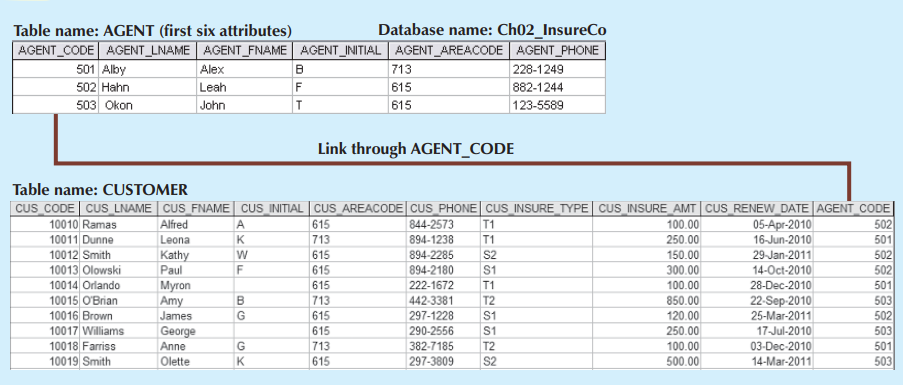The quest for better data management has led to several models that attempt to resolve the file system’s critical shortcomings. These models represent schools of thought as to what a database is, what it should do, the types of structures that it should employ, and the technology that would be used to implement these structures.
Here is the complete list of data models evolution
Hierarchical and Network Models
The hierarchical model was developed in the 1960s to manage large amounts of data for complex manufacturing projects such as the Apollo rocket that landed on the moon in 1969. Its basic logical structure is represented by an upside-down tree. The hierarchical structure contains levels, or segments. A segment is the equivalent of a file system’s record type. Within the hierarchy, a higher layer is perceived as the parent of the segment directly beneath it, which is called the child. The hierarchical model depicts a set of one-to-many (1:M) relationships between a parent and its children segments. (Each parent can have many children, but each child has only one parent.)
The Relational Model
The relational model was introduced in 1970 by E. F. Codd (of IBM) in his landmark paper “A Relational Model of Data for Large Shared Databanks” (Communications of the ACM, June 1970, pp. 377−387). The relational model represented a major breakthrough for both users and designers. To use an analogy, the relational model produced an “automatic transmission” database to replace the “standard transmission” databases that preceded it. Its conceptual simplicity set the stage for a genuine database revolution
The Relational Model
The relational model was introduced in 1970 by E. F. Codd (of IBM) in his landmark paper “A Relational Model of Data for Large Shared Databanks” (Communications of the ACM, June 1970, pp. 377−387). The relational model represented a major breakthrough for both users and designers. To use an analogy, the relational model produced an “automatic transmission” database to replace the “standard transmission” databases that preceded it. Its conceptual simplicity set the stage for a genuine database revolution
The relational model foundation is a mathematical concept known as a relation. To avoid the complexity of abstract mathematical theory, you can think of a relation (sometimes called a table) as a matrix composed of intersecting rows and columns. Each row in a relation is called a tuple. Each column represents an attribute. The relational model also describes a precise set of data manipulation constructs based on advanced mathematical concepts

The Entity Relationship Model
Peter Chen first introduced the ER data model in 1976; it was the graphical representation of entities and their relationships in a database structure that quickly became popular because it complemented the relational data model concepts. The relational data model and ERM combined to provide the foundation for tightly structured database design. ER models are normally represented in an entity relationship diagram (ERD), which uses graphical representations to model database components
The Object-Oriented (OO) Model
increasingly complex real-world problems demonstrated a need for a data model that more closely represented the real world. In the object-oriented data model (OODM), both data and their relationships are contained in a single structure known as an object. In turn, the OODM is the basis for the object-oriented database management system (OODBMS).
| GENERATION | TIME | DATA MODEL | EXAMPLES | COMMENTS |
|---|---|---|---|---|
| First | 1960s−1970s | File system | VMS/VSAM | Used mainly on IBM mainframe systems Managed records, not relationships |
| Second | 1970s | Hierarchical and network | IMS ADABAS IDS-II | Early database systems Navigational access |
| Third | Mid-1970s to present | Relational | DB2 Oracle MS SQL-Server MySQL | Conceptual simplicity Entity relationship (ER) modeling and support for relational data modeling |
| Fourth | Mid-1980s to present | Object-oriented Object/relational (O/R) | Versant Objectivity/DB DB/2 UDB Oracle 11g | Object/relational supports object data types Star Schema support for data warehousing Web databases become common |
| Next generation | Present to future | XML Hybrid DBMS | dbXML Tamino DB2 UDB Oracle 11g MS SQL Server | Unstructured data support O/R model supports XML documents Hybrid DBMS adds an object front end to relational databases |
